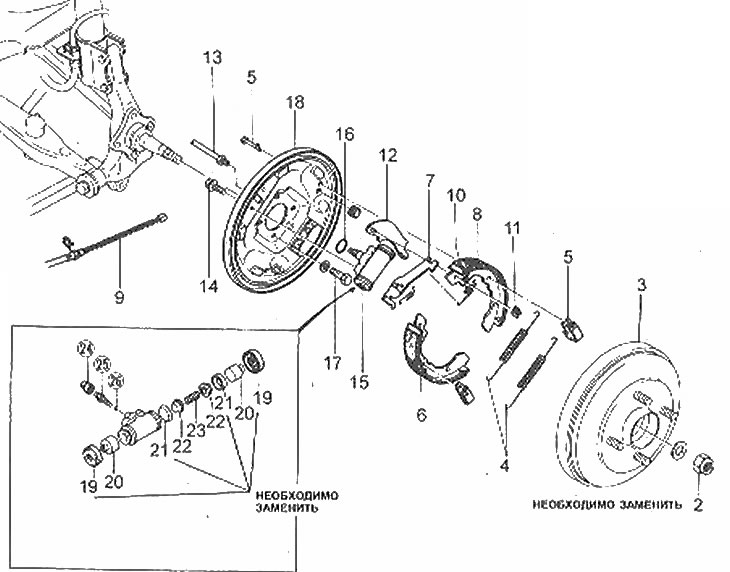
Location of rear drum brake components
2. Hub nut; 3. Brake drum; 4. Return springs; 5. Support rack pads and their springs; 6. Leading brake shoe; 7. Regulator; 8. Driven brake shoe; 9. Parking brake cable; 10. Brake shoe compression spring; 11. Bracket; 12 control lever; 13. Brake tube; 14. Bolt of the working brake cylinder; 15. Working brake cylinder; 16. Gasket; 17. Bolts; 18. Brake support sheet; 19. Dust covers; 20. Pistons; 21. Piston seals; 22. Spring support; 23. Spring; 24. Rubber cap; 25. Bleed fitting; 26. Steel ball
1. When working on brake components, be aware of asbestos dust generated when brake linings wear out. Do not inhale the dust - it is harmful to health.
2. Raise the vehicle and securely support the vehicle on axle stands.
3. Remove the wheel.
Note: All four rear pads must be replaced at the same time. Do not mix pads when installing.
4. Remove the drum-hub assembly (Section 1). If the drum cannot be removed, remove the plug from the support shield, insert a screwdriver through the hole, and press the support post spring to widen the gap as shown in the illustration. If the drum still cannot be removed, loosen the parking brake lever adjusting nut.
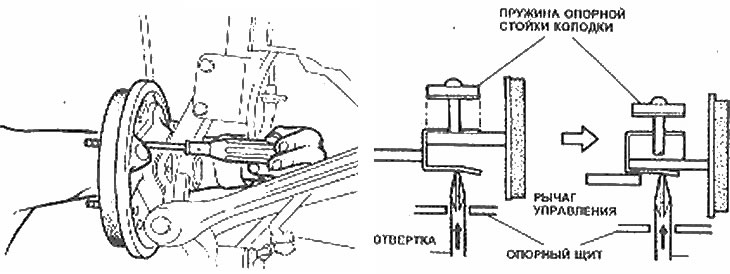
Release the shoe support springs by inserting a screwdriver through the hole in the support shield
5. Remove the brake shoe return springs (photo).
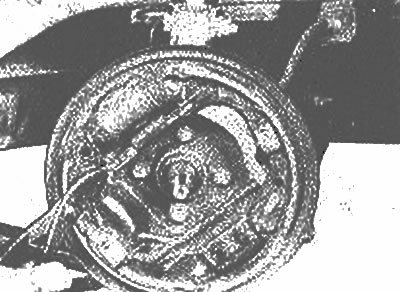
Remove return springs with pliers
6. Remove the support post springs and the posts themselves (photo).
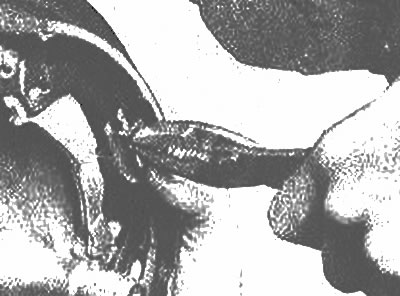
Compress the support post spring and rotate the post to release it from the spring | 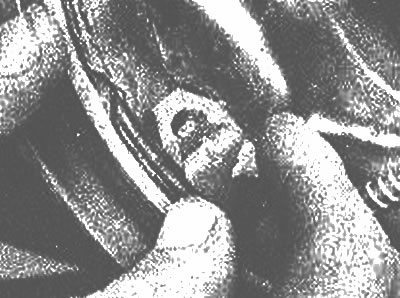
Remove the strut spring |
7. Remove the leading brake shoe and adjuster. You may need to loosen the regulator with a screwdriver as shown in the illustration.
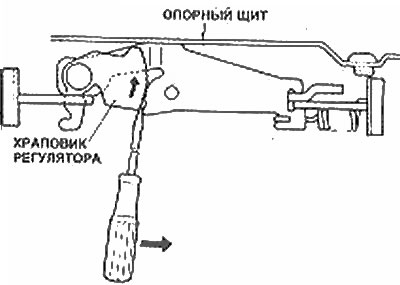
Insert a screwdriver into the regulator ratchet and slide it in the direction shown (arrow), to release the regulator
8. Remove the driven brake shoe and disconnect the parking brake cable.
9. Remove the bracket and disconnect the control lever from the block (photo).
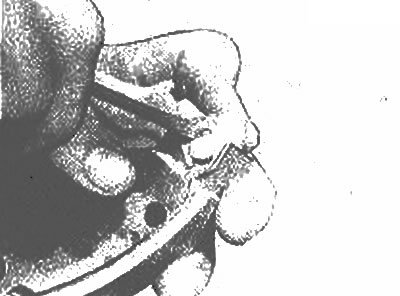
Using a small screwdriver, remove the bracket that secures the control lever to the driven brake shoe
10. Lightly grease the surface of the support shield with white lithium grease at the points shown in the illustration. Avoid getting grease on friction surfaces.
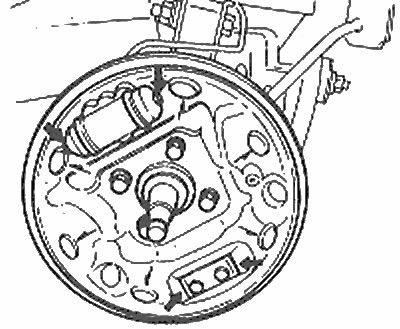
Places for lubrication of the support shield and covers of the working brake cylinder
11. Install the control lever on the new driven brake shoe.
12. Install the driven brake shoe together with the compression spring.
13. Connect the parking brake cable.
14. Assemble the leading brake shoe and regulator, connect the regulator assembly into place (photo).
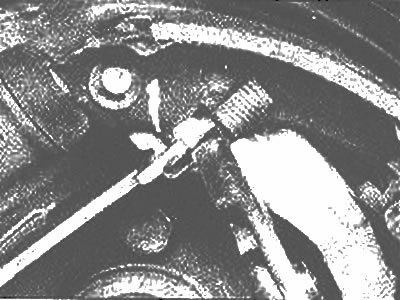
Connect the brake shoe compression spring to the adjuster using pliers
15. Install the support leg springs.
16. Install return springs.
17. Center the pad assembly (photo).
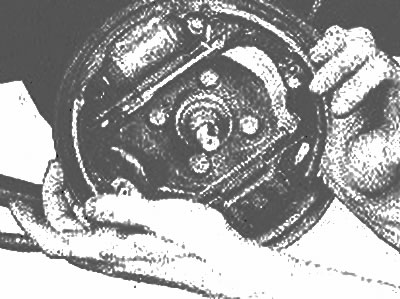
After installing all components, center the brake assembly with clean hands
18. Examine a brake drum on presence of cracks, scratches, deep grooves and darker or lighter spots. If these spots cannot be removed with fine sandpaper and/or other damage listed is found, the drum must be reground on a suitable machine (contact a specialist) or replaced (depending on the degree of damage).
Note: The maximum diameter is stamped on each brake drum (photo).
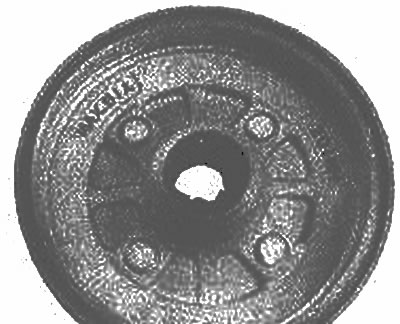
The maximum diameter is marked inside the brake drum
19. Install hub/brake drum assembly and adjust wheel bearings (Section 1).
20. Install the wheel, insert the wheel nuts and tighten them with the tightening force regulated by the Specifications. Lower the car to the ground.
21. Depress the brake pedal several times to adjust the brakes.
22. Check the operation of the parking brake. adjust it if necessary.
23. If new brake pads have been fitted, avoid hard braking for the first few miles before the new pads are fully worn in.
